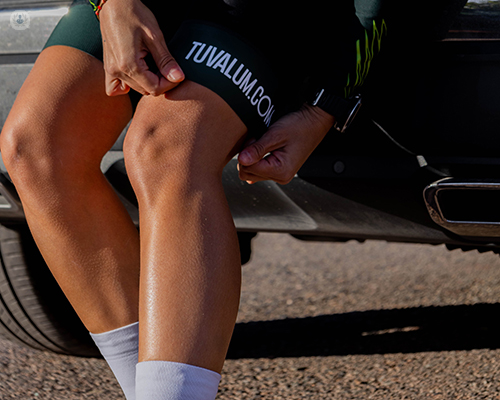An expert overview of knee osteoarthritis
Autore:What is knee osteoarthritis?
Osteoarthritis is the most common type of arthritis that affects the knee. With osteoarthritis, the natural turnover of the cartilage becomes disrupted.
As a result, the cartilage becomes increasingly fragile and prone to damage through everday use. With time, cracks in the cartilage may appear, which permit joint fluid to penetrate deep into the tissue. This is the prepatrator for further damage. Thos continues over time, resulting in the complete loss of areas of cartilage, meaning that the bone ends are left exposed.

What are the symptoms of knee osteoarthritis?
In the inital stages, there may only be a few symptoms, or in some cases, there will be none at all. The most typical symptom is pain, which patients often refer to as a deep - seated “knawing" pain, similar to that of a bad permanent tooth ache) which continues as the condition progresses. Patients also often experience sharp pain during activity or inadvertent twisting.
Additionally, some people may have a feeling of stiffness, instability and a feeling that the knee may suddenly give way. If the cartilage layer is lost, this can result in a change of the shape of the leg, making it appear bowed or knocked kneed.
What causes (secondary) knee osteoarthritis?
Primary osteoarthritis is known as wear-and- tear arthritis and can be caused by injury or infection. Some people may also be more prone to developing knee osteoarthritis due to factors including family history of the condition, gender and being overweight.
Other conditions such as rheumatoid arthritis, gout or previous injury can contribute to the knee joint developing osteoarthritis seconarily.
What are the treatment options for knee osteoarthritis?
Osteoarthritis can causes a variety of symptoms and treatment fot the condition will depend on the individual’s specific situation.
In the inital stages, muscle strengthening /guided exercise such as swimming and cycling can help to control the fine movement of the knee and can significantly improve symptoms. Due to the fact that being overweight can cause osteoarthritis, losing weight can reduce the force which goes through the knee.
Injections with a steriod can aid with inflammation in the knee in the intial stages of the condition.
Surgical management is tailored to the circumstances of each individual. The most common and robust option for the majority of patients who have significant intrusive symptoms of osteoarthritis is a total knee replacement.
With a total knee replacement, the arthritic surfaces of the femur (thigh bone) and tibia (shin bone) are removed and are then resurfaced with metal components. Following this, a smooth plastic bearing is placed between the two surfaces to allow the knee to bend and move in the same way as a normal knee. The operation is extremely successful and reliable.
If you are suffering from knee osteoarthritis and would like to book a consultation with Mr Craig, you can do so via his Top Doctors profile today.



